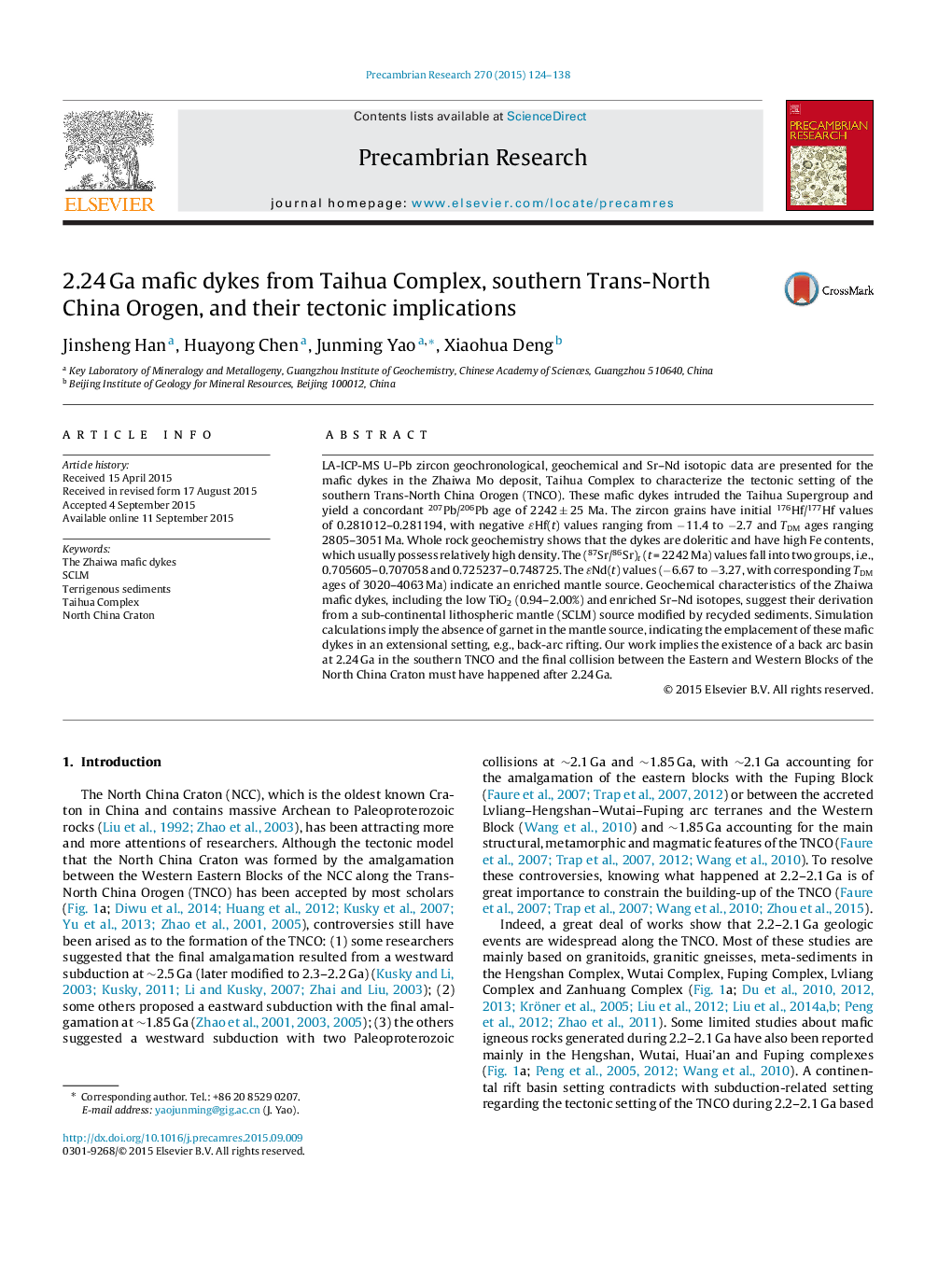| Article ID | Journal | Published Year | Pages | File Type |
|---|---|---|---|---|
| 4722458 | Precambrian Research | 2015 | 15 Pages |
•The Zhaiwa mafic dykes occurred in the Taihua Complex.•Intrusion age of the Zhaiwa mafic dykes are 2.24 Ga.•The Zhaiwa mafic dykes were emplaced in a back arc setting.•The final amalgamation of the North China Craton must have happened after 2.24 Ga.
LA-ICP-MS U–Pb zircon geochronological, geochemical and Sr–Nd isotopic data are presented for the mafic dykes in the Zhaiwa Mo deposit, Taihua Complex to characterize the tectonic setting of the southern Trans-North China Orogen (TNCO). These mafic dykes intruded the Taihua Supergroup and yield a concordant 207Pb/206Pb age of 2242 ± 25 Ma. The zircon grains have initial 176Hf/177Hf values of 0.281012–0.281194, with negative ɛHf(t) values ranging from −11.4 to −2.7 and TDM ages ranging 2805–3051 Ma. Whole rock geochemistry shows that the dykes are doleritic and have high Fe contents, which usually possess relatively high density. The (87Sr/86Sr)t (t = 2242 Ma) values fall into two groups, i.e., 0.705605–0.707058 and 0.725237–0.748725. The ɛNd(t) values (−6.67 to −3.27, with corresponding TDM ages of 3020–4063 Ma) indicate an enriched mantle source. Geochemical characteristics of the Zhaiwa mafic dykes, including the low TiO2 (0.94–2.00%) and enriched Sr–Nd isotopes, suggest their derivation from a sub-continental lithospheric mantle (SCLM) source modified by recycled sediments. Simulation calculations imply the absence of garnet in the mantle source, indicating the emplacement of these mafic dykes in an extensional setting, e.g., back-arc rifting. Our work implies the existence of a back arc basin at 2.24 Ga in the southern TNCO and the final collision between the Eastern and Western Blocks of the North China Craton must have happened after 2.24 Ga.
